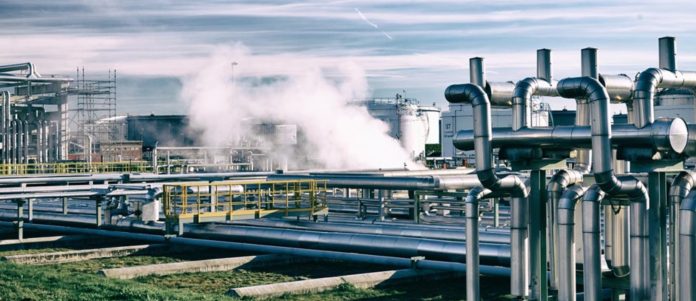Aarthi JanakiRaman, Research Director, Chemicals and Advanced Materials at TechVision, walks us through Microbial electrosynthesis (MES) and ponders whether it is the way forward for biomanufacturing in the chemical industry
The global trend toward sustainability and circularity in various industries is driving the need for sustainable, recyclable, and bio-based products. Circularity in the chemical industry is gaining prominence due to the rising concerns about toxic by-products and waste generation. The recycling/upcycling of byproducts and gases such as CO2 and waste (biomass) into value-added products is the need of the hour. Consumer demand for bio-based chemicals and materials with clean ingredients is also driving the need for sustainable bio-based practices and methods of production.
Microbial electrosynthesis (MES), along with other bioconversion technologies, have shown promising results for use as biomanufacturing apart from its role in carbon capture and utilization. The use of microbial catalysts has several advantages over traditional catalytic systems, as microbes can be engineered according to need and are self-regenerating in nature. MES can also function in optimal temperature conditions that can help in process cost-effectiveness. While processing time and cost is dependent on the output desired, the flue gas composition, and can rise with the level of purity required, the use of pretreatment processes to reduce impurities can reduce cost. The flexibility of MES systems to process inputs from varied biological processes such as anaerobic digestion, even conventional
wastewater treatment can increase its commercial adoption potential.
The ability to scale up and retrofit existing industrial manufacturing units are the most researched components that are perceived as key enablers for MES processes for use in chemical synthesis, along with the culmination of different biotechnology approaches such as analytical assays, genetic, protein and metabolic engineering.
What are the advantages of Microbial electrosynthesis (MES)?
MES has the advantage of offering tailored and specific routes for developing bio-based chemical products and can produce diverse products that can be used in flavours, food, fabric, and fuels apart from traditional chemical processes. Integration of MES with other biotechnological approaches, such as cell factories using engineered microorganisms and enzymes with enhanced metabolic flux, can help in the manufacture of bio-based chemicals and products at large scale with good yield. It also gives an added advantage as biocatalytic transformations are environmentally safe processes and room temperature reactions require minimal energy and water, thereby enhancing the sustainability of chemical processes. Although these approaches are highly independent, they are strategically combined in microbial synthesis to achieve the desired products.
Industrial deployment is still in the budding stages
While R&D efforts are gaining momentum, industrial deployment is still in the nascent stages. Downstream processing still occupies a major chunk of production costs. To achieve economies of scale, there is a need for efficient extraction and processing technologies that can be deployed at an industrial scale. However, the last two to three years have seen a rise in collaborative efforts of design engineers, biologists, and process engineers that are focused towards aiding the design- implement-test-and-learning process for fine-tuning process development to meet product developmental needs. The reactor design also plays a significant role in industrial-scale deployment. The use of individual stacked units is preferable to a single unit as it is easy to maintain, operate and also can be customized depending on the volume of output needed.
Custom-designed microbial catalysts and processes are needed to enable the transformation of various types of waste streams into high-value and widely used chemicals, facilitating the closing of production loops. Valorization of carbon dioxide can be extended to the synthesis gas, and chemical byproducts through engineering specific microbes in the electrochemical cells to manufacture specific materials that act as potential replacements for additives, intermediates, and animal proteins and chemicals such as organic acids and bio-based polymers that have been attracting the attention of the investment community.
Integration of renewable energy sources such as solar, wind, or biomasses to provide electricity to operate MES systems either directly or indirectly with the use of photoactive electrodes can reduce power costs and increase the sustainability quotient while maintaining the requisite power density. The use of hybrid systems can address the potential supply challenges.
Real-time monitoring systems such as those used in the pharma industry can be of use to live stream data, provide process visibility and control. The implementation of digital tools for monitoring and analytics can also help in the optimization of design and process engineering.
Techno-economic viability of MES is necessary to support industrial-scale commercialization
While MES has been long established as a viable way for CCU, in-depth techno-economic viability of potential end products is required to support wide-scale commercialization. LCA studies of end chemicals can also help in establishing its role in a more sustainable chemical industry. Therefore, it’s important to conduct an in-depth techno-economic viability of MES reactors that is operable at an industrial scale to establish its competitiveness. The flexibility of MES system to be retrofitted in an industrial system can act as a key enabler for its deployment; an increase in partnerships between chemical manufacturers and end users can drive need-based product development and helps in minimizing waste generation and overproduction that will positively impact adoption. However, unless economies of scale can be achieved, it will be challenging to expect large-scale commercial deployment, and the use of microbial synthesis processes will be restrained to lab-scale testing and on-demand synthesis. More focus on the use of MES to produce high-value chemicals can help industrial adoption while helping manufacturers in their carbon abatement strategies.











